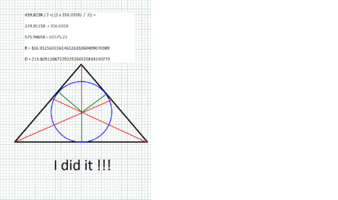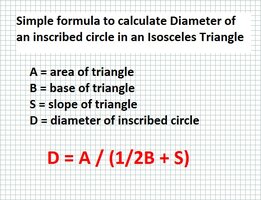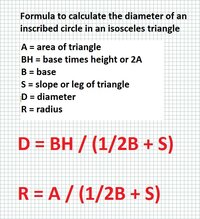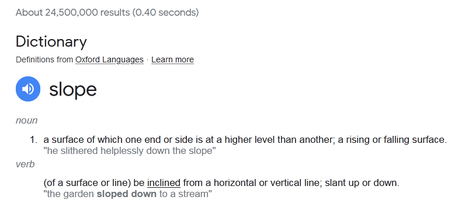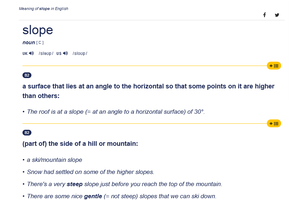Hi I am having a devil of a time figuring this out and every explanation doesn't seem to work.
It seems simple enough. we have a triangle with base of 439.823 units and slope sides of 356.035 units. What is the diameter or radius of the largest circle that perfectly fits inside this triangle. Thank you in advance.
It seems simple enough. we have a triangle with base of 439.823 units and slope sides of 356.035 units. What is the diameter or radius of the largest circle that perfectly fits inside this triangle. Thank you in advance.

